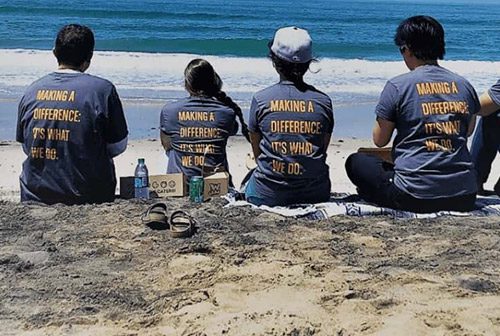The numbers are in. California is conserving less water than it needs to. San Diego is doing even worse.
- California conserved less water this year than last year. In October 2015, California conserved 22.5 percent more than 2013. This year, California only conserved 19.5 percent.
- In October 2016, San Diego County conserved 12 percent more water than in 2013 — is this good? Not really. In October 2015 we conserved 22 percent more water than 2013. We can — and need — to do better.
- All local water agencies in San Diego County used more water this October than they did last October.
- Olivenhain Municipal Water District went from a commendable 25 percent water savings last year to a paltry five percent water savings this year.
Why are we wasting so much water? This is what happens when water agencies stop giving meaningful effort towards conservation. Almost 75 percent of the state is still in drought conditions. 100 percent of Southern California. We need to be doubling down on conservation, not giving up on it.
Analysis
Drought Rages On, San Diego Uses More Water
Our water authorities rely upon wasteful water use. The more water we waste, the more money they receive. It’s no surprise that, after the state allowed our local water authorities to regulate themselves, they nixed conservation targets and water use steadily increased.
When Governor Brown mandated water conservation, the average goal of local water agencies was a 21 percent reduction in water use. Now that water agencies are allowed to set their own goals, 330 out of California’s 395 water agencies (including all the agencies in San Diego) have nixed conservation goals entirely, dropping the state average to two percent.
Don’t let the recent rains fool you. Drought is our new normal and the future will only be hotter and drier. Using less water is as important as ever to ensure reliable and affordable water for all.
The Journal of Environmental Management studied two Australian regions facing water shortages, Southeast Queensland and Perth.
- Strategy of Using Less: Southeast Queensland invested in conservation and efficiency. They saved big on lower energy costs and achieved a dramatic, permanent drop in water use per capita. Hooray!
- Strategy of Creating More: Perth invested in a desalination plant. Per capita water use dropped only slightly and Perth paid heavily in higher energy costs. Yikes.
Long term reductions in water use is the cheapest and most environmentally sound way to address California’s water management problems.
The Pacific Institute released an in-depth analysis on the costs of the different alternative water supply options available to California. The results:
- Cheapest: Stormwater capture at an average of $530 per acre foot of water.
- Most expensive: Seawater desalination at an average of $2,100 per acre foot. (San Diego County ratepayers pay $2,140 per acre foot from Poseidon’s desalination plant in Carlsbad)
- Middle ground: Water recycling projects, that turn wastewater into drinking water, fall somewhere in between. (City of San Diego’s approved Pure Water project will create 83 million gallons per day of drinking water by 2035)
Jo Ann and Ted, in Talmadge, tend to hear their neighbors gossiping quietly as they walk by their front yard, “Don’t they know we’re in a drought?!” Jo Ann and Ted do, that’s why their yard, packed with fruit trees and a jungle of colorful plants doesn’t use a single drop of extra municipal water.
Read about the simple, low-cost techniques, available to nearly all San Diegans, they use to grow a zero-water landscape without any gravel or cactus. It’s actually pretty easy.
Scientific study says that if carbon emissions continue unabated, the risk of a mega-drought could exceed 99 percent. Cornell Professor of Earth Science Toby Ault tells the Atlantic,
“This will be worse than anything seen during the last 2,000 years and would pose unprecedented challenges to water resources in the region. As we add greenhouse gases into the atmosphere—and we haven’t put the brakes on stopping this—we are weighting the dice for mega-drought conditions.”
San Francisco Bay and Delta Are Quickly Dying
Thanks to transfers of river water from San Francisco’s Delta and Bay to farmland and urban centers in Southern California, scientists report many species in the San Francisco ecosystem are in their “sixth extinction,” environmental science’s most-dire definition of ecosystem collapse.
For the last two decades, the State Water Resources Control Board has attempted to reach an agreement that would protect the ecosystem by diverting less water, but also not upset anybody who doesn’t want to use less water. This has been impossible. The agreement remains stalled while the San Francisco ecosystems near collapse.
You made it through the headlines. Enjoy a GIF.















